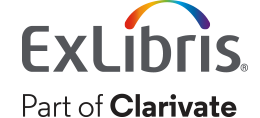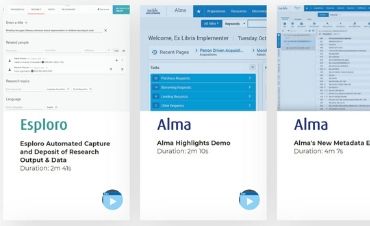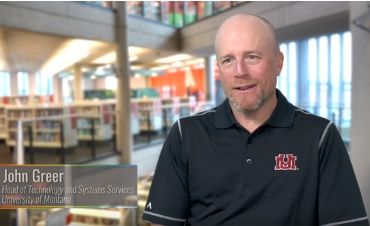Dani Guzman, Ex Libris
There is an array of options nowadays for delivering assigned reading and resources to students in academic institutions. In “Battle over College Course Material is a Textbook Example of Technological Change,” columnist Danielle Douglas-Gabriel runs through some of them, including multimedia courseware, open-source textbooks, open educational resources (OER), and password-protected online material (using an access code paid for by the student).
This growing complexity, lower demand for hard-copy basic-level textbooks, and rising prices for advanced textbooks has led to the innovation of inclusive-access programs. As described in January 2017 by Carl Straumsheim, Technology Correspondent for Inside Higher Ed, inclusive access means that students need not purchase reading list resources on their own; rather, they “pay a course fee that provides access to course materials—delivered digitally unless students pay extra for a print-on-demand copy—on the first day of class.”

A different approach is to directly and closely link course resource list creation with library resources.![]()
The solution can still involve the use of paid access codes for specific digital resources, but those costs are subsumed in the global inclusive-access fees. As the use of access codes becomes more popular, however, their cumulative cost to the student increases. This becomes an even more frustrating issue for students when the resources behind the paywall do not seem to add enough value to justify the expense.
As for the need to purchase course resources, as early as 2011, studies of U.S. schools showed that 45% of materials in purchased course packs—the more modest precursor to inclusive access—were legally available for free online. Of those materials, 60–65% were available through the library’s holdings. Furthermore, statistics collected by Ex Libris from 10,456 courses at 11 universities in Europe, Australia, and North America showed that 61.4% of course materials were books (or book chapters) freely available in the library, physically or electronically.
Yet, if a student is paying for inclusive access, are they getting the least expensive, most readily available option? Not necessarily, as professors drawing up reading lists for inclusive access often don’t have the time, knowledge or institutional support to find the most innovative or least expensive resources available. As might be expected, the publishers who provide inclusive access solutions are not quick to address this issue.
A different approach is to directly and closely link course resource list creation with library resources. By having the academic and educational systems networked with the library resource management and discovery systems, the library can take a more active role and make their institution’s course lists better in at least three ways:
1. By fully leveraging the library collection, the faculty avoids unnecessary costs associated with purchasing course materials or access already available on campus.
2. Adopting a pay-per-use licensing model avoids the need to pay for unused resources. Otherwise, libraries would pay the full amount—for all students in the course—regardless of how many students actually downloaded the materials. And students who do need to pay only pay when they are assured that the material will actually be used in their course.
3. Access to all linked collections gives librarians the tools to advise faculty of newly available materials, as well as of alternatives which might be better and less expensive (including open educational resources).
By helping faculty identify the best course resources wherever they are held, and providing them centrally, libraries can become a larger part of the solution to the increasingly critical problem of how to make course materials available and affordable to students.
May 3, 2018






